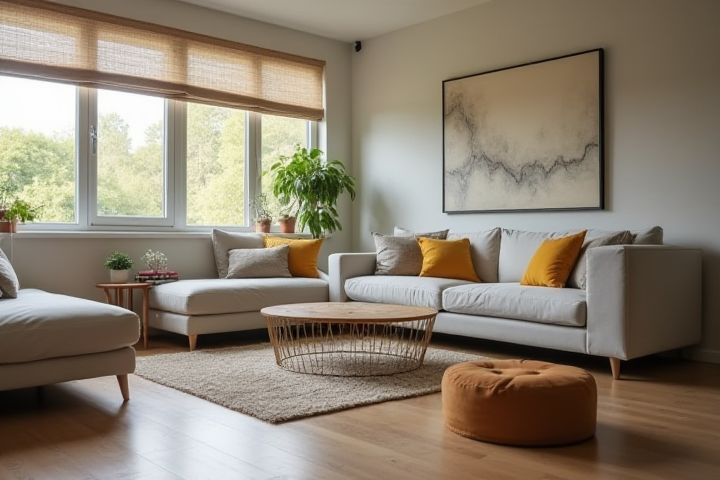
Living in a house during renovations is possible, but it requires careful planning and consideration of comfort, safety, and convenience. You should identify which areas of the home remain usable and designate those as living spaces to minimize disruption. Essential utilities like water, electricity, and heating must remain functional for your daily needs. Noise and dust from construction work can affect your quality of life, so consider using protective measures like air purifiers and noise-canceling devices. It's helpful to establish clear communication with your contractors to stay updated on timelines and any necessary adjustments to your living arrangements.
Can We Live In A House During Renovations
Safety precautions.
Living in a house during renovations poses several safety risks, but taking proper precautions can mitigate these dangers significantly. Ensure that you have a designated safe area in the home, away from construction zones, where you and your family can retreat without exposure to dust or hazardous materials. Use protective gear, such as masks and goggles, especially if workers are sanding, painting, or performing demolition, which can release harmful particles into the air. Installing temporary barriers and maintaining clear pathways in and out of the construction zones can prevent accidents and keep your living space organized during the renovation process.
Temporary disruptions.
Living in a house during renovations often leads to temporary disruptions, such as noise levels reaching up to 95 decibels from construction tools. Dust and debris can cover surfaces, requiring frequent cleaning to maintain a comfortable living environment. Essential areas like kitchens and bathrooms might experience limited access, sometimes for days or even weeks, complicating your daily routines. Maintaining patience and organization can significantly ease the challenges of navigating your home amidst ongoing renovations.
Dust and debris management.
Living in a house during renovations is feasible with effective dust and debris management. Employing high-efficiency particulate air (HEPA) filters can significantly reduce airborne particles, as these filters trap 99.97% of dust and allergens. Seal off renovation areas with plastic sheeting to contain debris, and use heavy-duty vacuum cleaners equipped with HEPA filters for safe cleanup. Implementing a strict cleaning schedule, ideally once daily, ensures that your living space remains as dust-free and habitable as possible during the renovation process.
Access to essential areas.
Living in a house during renovations is feasible, especially when considering access to essential areas. Ensure that your kitchen and bathroom facilities remain operational, as these spaces are crucial for daily living. Maintain clear pathways to these functional areas to minimize disruption, and designate a specific zone for storing tools and construction materials to avoid clutter. Prioritizing safety measures, like covering exposed wiring and securing loose materials, can further enhance your comfort during the renovation process.
Noise considerations.
Living in a house during renovations can be challenging, especially regarding noise levels. Depending on the scope of the project, daily noise can range from 70 to 90 decibels, potentially causing disturbance to daily activities. Consider implementing noise reduction strategies such as soundproofing barriers or using heavy drapes to minimize disruption in your living space. You might also schedule work during specific hours, typically between 8 AM and 5 PM, to align with times when you are least affected by the noise.
Utility interruptions.
Living in a house during renovations often involves navigating utility interruptions that can significantly impact daily routines. Electricity may be temporarily cut off for safety during electrical work, which can last from a few hours to several days. Water service disruptions are also common, particularly when plumbing installations are involved, potentially requiring you to live without running water for an extended period. To mitigate these challenges, preparations such as designating alternative water sources and stocking up on flashlights and non-perishable food can ensure your comfort and functionality during the renovation process.
Contractor schedules.
Living in a house during renovations is feasible, but it's essential to coordinate closely with your contractor. A well-structured contractor schedule outlines the phases of work, helping you anticipate disruptions and adjust your living arrangements accordingly. For instance, if significant plumbing or electrical work is planned, you may need to vacate certain areas temporarily. Effective communication with your contractor can minimize inconveniences, allowing you to maintain some normalcy during the renovation process.
Temporary accommodations.
Living in a house during renovations can be challenging, but it is possible if you opt for temporary accommodations within your property. Utilizing a separate space, such as a basement or an additional room, can create a livable environment while minimizing disruption. If significant work is underway, consider renting a nearby apartment or staying with family to ease the strain. Research shows that an estimated 30% of homeowners choose to remain on-site during renovations, balancing convenience with the need for a comfortable living space amidst the chaos.
Budget considerations.
Living in a house during renovations can significantly impact your budget, often leading to unforeseen costs. If you choose to remain on-site, consider allocating an additional 10-20% of your total renovation budget for temporary accommodations and potential increased living expenses, such as utilities. You may also need to set aside funds for food options, as kitchen access could be limited during the project. Prioritizing essential renovations first, while also creating a detailed timeline, can help manage costs and minimize disruptions to your daily life.
Communication with contractors.
Open communication with contractors is crucial when living in a house during renovations, as it ensures that expectations and timelines are clear. Establish a project schedule outlining key milestones, which should be shared with everyone living in the house to minimize disruptions. Regular updates, whether weekly meetings or daily check-ins, can help you stay informed about progress and any changes in plans. By fostering an environment of transparency, you can address concerns promptly, leading to a smoother renovation process.
